- Heddels
- Posts
- Aug 20 - Rugby Shirt History - Devium
Aug 20 - Rugby Shirt History - Devium
Together with
History of the Rugby Shirt
Don't call it a polo. Our rundown on the rugby shirt and its various iterations in prep schools, pop culture, and beyond.
Albert Muzquiz & James Smith

Like most Americans, I don’t know a damn thing about rugby. But unlike most Americans, I’ve at least tried to learn. The sport takes place on a “pitch,” there’s something called a “scrum” and the players leave the game dashed to pieces. Luckily today’s article won’t focus on the minutiae of the violent sport, but rather on a nugget of sartorial goodness that emerged from the bloodshed.
The rugby shirt, the long-sleeved, collared shirt might look like a polo at first, but its origin is entirely different—fewer horses involved, certainly. So join us as we delve into the history of an underrepresented garment worn by players of a sport I don’t even a little bit understand.
In the Beginning
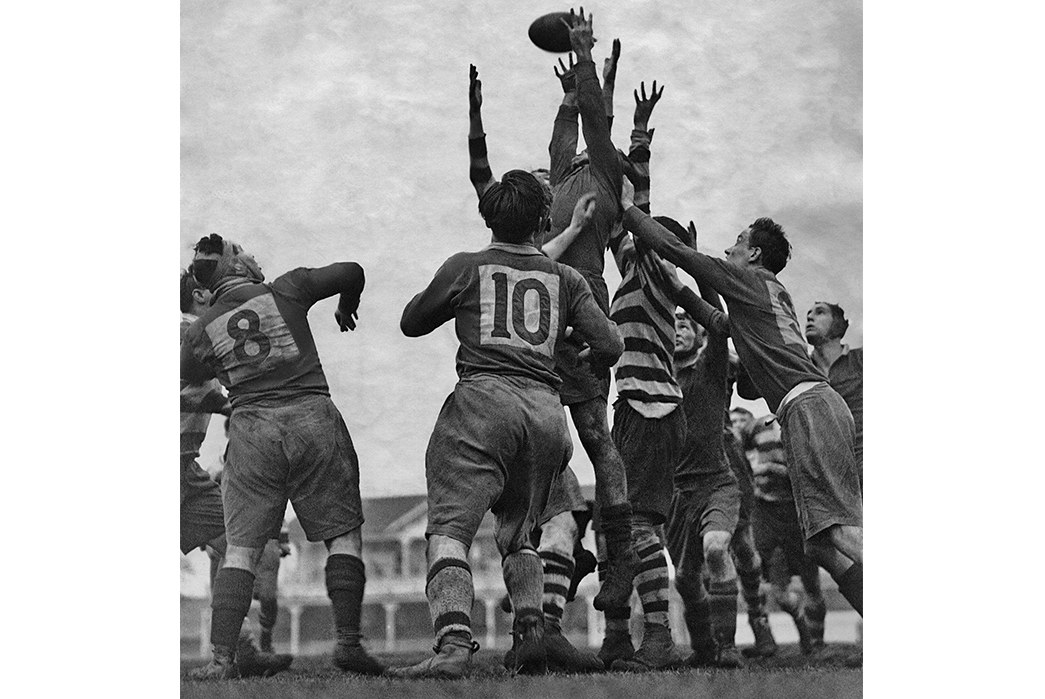
Rugby shirts at play. Image via Pinterest.
As with many sports origin stories, the creation of rugby is shrouded in myth, but the consensus seems to be that the sport began at the aptly named Rugby School in England in the 1830s.
The sport grew in popularity over the next twenty years and formally-organized clubs began popping up all over the U.K. Appropriately, it was the team at Rugby that was the first to wear a uniform into battle.
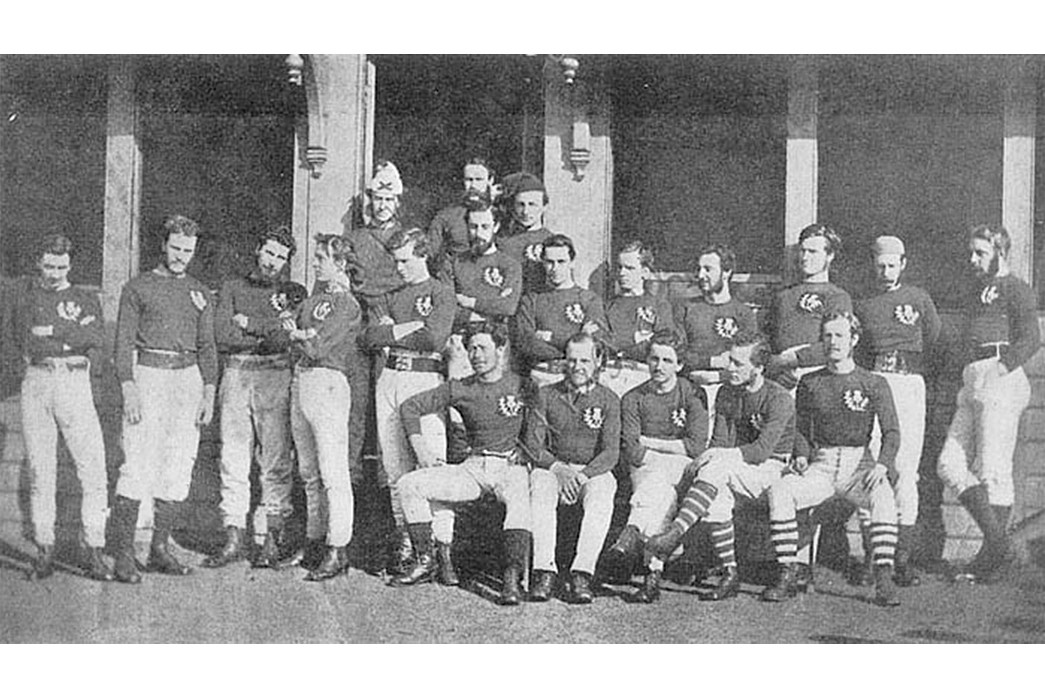
Scotland’s first rugby team pose in uniform in 1871. Image via web.archive.org
Early rugby uniforms were not unlike those worn above. Matching wool jumpers were paired with white trousers. Although wool was the de facto “tech” fabric of the era (even early swimsuits were made of wool), it quickly became apparent that the itchy, heavy, knit jumpers were less than ideal in a sporting context.
Heavy-gauge cotton shirts worked far better on the pitch, and thus the modern rugby shirt was born.
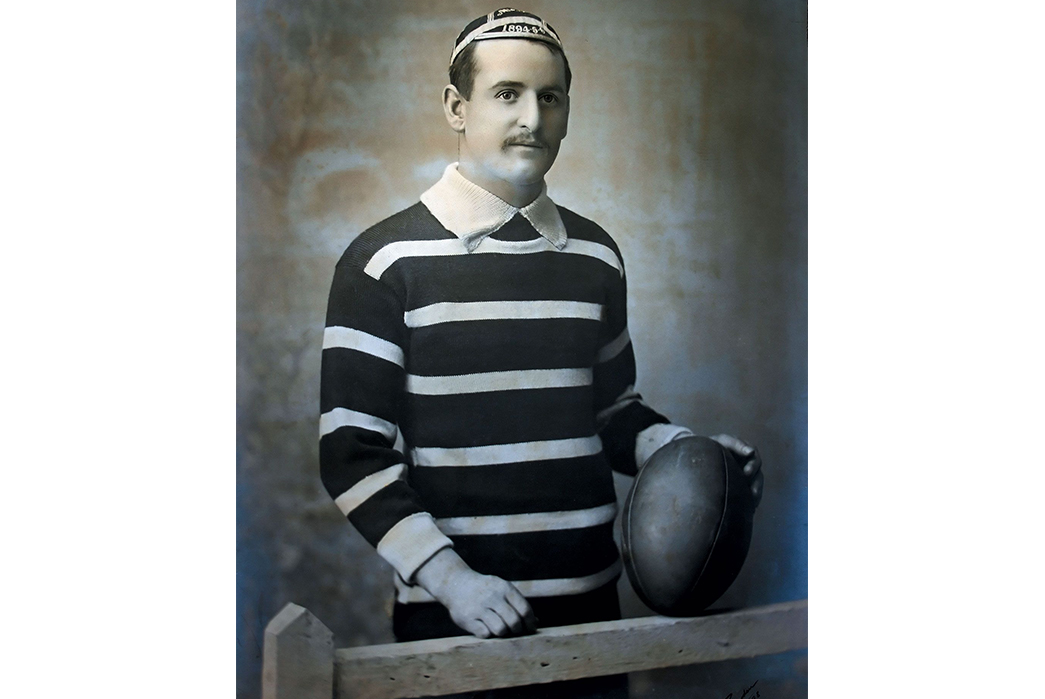
Rugby shirt. Image via Pinterest.
Long-sleeved, usually colorful or striped; rugby shirts were most popular with a contrasting collar. Unsurprisingly, cotton shirts breathed better, allowing players to clobber one another in comfort. The early gentlemanly uniforms adapted to a more athletic version of the sport.
Small caps were worn less frequently and the long white trousers became shorts. In the late 1800s, some especially fancy rugby players had been reported wearing monocles on the pitch. But, by the mid-1900s, such an affectation would have been incomprehensible.
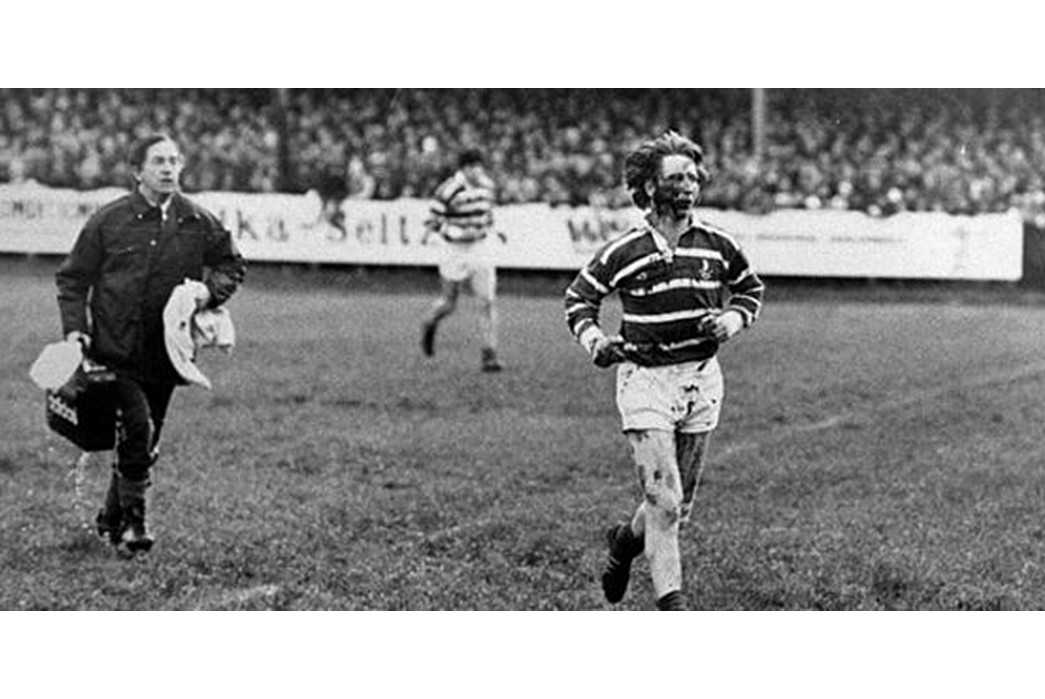
Bloodied player in a more modern uniform. Image via The Rugby Paper.
Don’t Call It a Polo
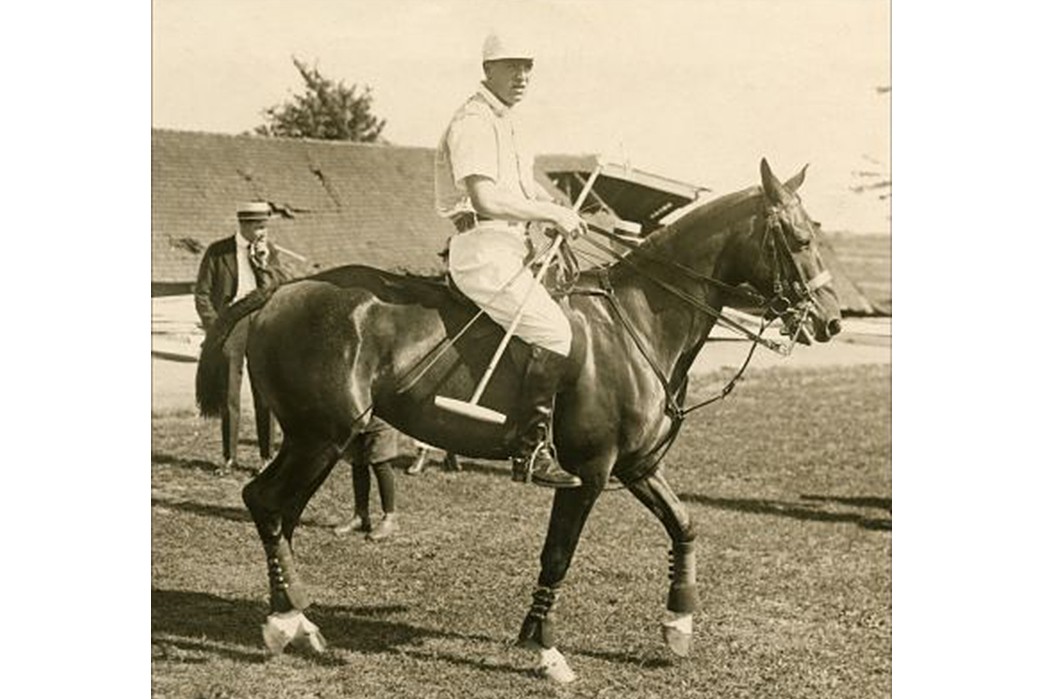
Polo player. Image via Polo Museum
The similarities between the rugby and polo shirt aren’t immediately obvious. The knit cotton, the contrast collar, and the three buttons make the two shirts nearly doppelgängers. The fact of the matter is that true polo shirts no longer exist.
Polo shirts, as the name suggests, were made for playing polo. They featured several key details that are shared by rugby and modern polo shirts, but the original polo shirt featured a button-down collar. The buttons on your favorite dress shirt’s collar aren’t there to secure a tie, they date back to the original polo shirts that needed secure collars that wouldn’t flap up in a rider’s face as he played. It was Brooks Brothers that copied this detail, bringing it to their dressy oxford cloth shirts.
Long story short, a modern polo isn’t even a real polo shirt, and though a lookalike, the rugby shirt has changed far less in its history and stayed truer to its source material.
Climbing, Ivy, and Pop Culture

A rugby shirt on a North American college campus via Put This On (left) and climber Jimmie Dunn (RIP) in a rugby shirt via Mountain Project.
Rugby shirts found unlikely homes on the backs of folks far outside of the rugby pitch. After the sport saw a revival of sorts in the 60s and 70s, rugby shirts inevitably found their way onto Ivy League campuses and became a staple of preppy style. Ralph Lauren, a brand known for its Ivy League tastemaking, has been a big manufacturer of fashion rugby shirts since this time.
/ In Partnership with Devium USA /
Devium’s collection of small batch originals are built to withstand the test of time. Whether that’s a pair of their new Utility Trunks made with Russell Surfboards or a classic Boca Flannel, everything from Devium is 100% made and sourced in USA and backed by their lifelong guarantee.
Many brands promote transparency in their supply chain, but Devium is the only one we’ve found to share the source of their materials and production for every garment they make and they guarantee if for life.
Get a look at their new collection at Devium.
-
Want to see your name here? Send us an email at [email protected]

A vintage Patagonia rugby shirt via Noah.
College campuses make a lot of sense, but strangely, so do rock faces. Rock climbing surged in popularity in late 1960s California, with free-spirited climbers favoring rugby shirts due to their rugged construction that resisted the abrasion of Yosemite’s rock walls. Legendary outdoor label Patagonia was founded by rock climber Yvon Chouinard in 1973. Naturally, Chouinard’s label ended up producing rugby shirts to serve the climbing community.
Modern Rugby Shirts

Modern rugby shirts. Image via Mirror.
The jump from wool to cotton wasn’t quite enough for the rugby shirt. While the majority of heritage brands that make them will sell the classic striped, contrast-collared iteration; modern rugby players dress quite differently.
Synthetic fibers meant that the shirts could fit tighter and closer to the body than ever before, making it more difficult for opponents to grab each other by their shirts. The new breathable fabrics are designed to be tear-resistant and better at sweat control than their predecessors. Thousands of hours of testing and development go into the newest generation of rugby shirts. Tiny rubber bubbles, invisible to the naked eye, on the chest and shoulders, make it easier to catch the ball to your chest, or grab onto a teammate’s shoulder.
Now all that is lacking from the rugby shirt is the quirky, collared charm of the stripey classic versions.
Makers of Quality Rugby Shirts Today
German label, Heimat, makes a high-quality rugby shirt from a robust yet comfortable organic cotton jersey. The Raglan Rugby is made in Portugal and features a raglan sleeve construction that affords the wearer more movement while also serving as a visual point of difference. Cotton herringbone twill lines the 2-button placket, which fastens with custom branded corozo nut buttons.
Available at Heimat for $106.
Canadian retailer Lost & Found is home to a range of quality brands, but they make their own goods, too. The Lost & Found Classic Rugby Jersey is made entirely in the brand’s homeland, from the weaving of the 12 oz. pre-shrunk cotton to the sewing of the finished jersey.
It’s a classic Rugby Shirt in two accessible colorways, constructed with the classic contrasting twill collar, reinforced button placket, and ribbed cuffs. Each Shirt is finished with tonal Lost & Found embroidered branding on the left arm
Available at Lost & Found for $115.
Barbarian has been making rugby jerseys since 1981, and is probably one of the most underrated sportswear manufacturers in the world. They produce everything in Canada, knitting their own fabric and sewing the jerseys using a range of high quality North American cotton.
Honoring on-field specs and committing to high-quality production, Barabarian creates Rugby Jerseys that looks and performs great on and off the pitch
Available at Barbarian for $116
What did you think of today's newsletter? |





